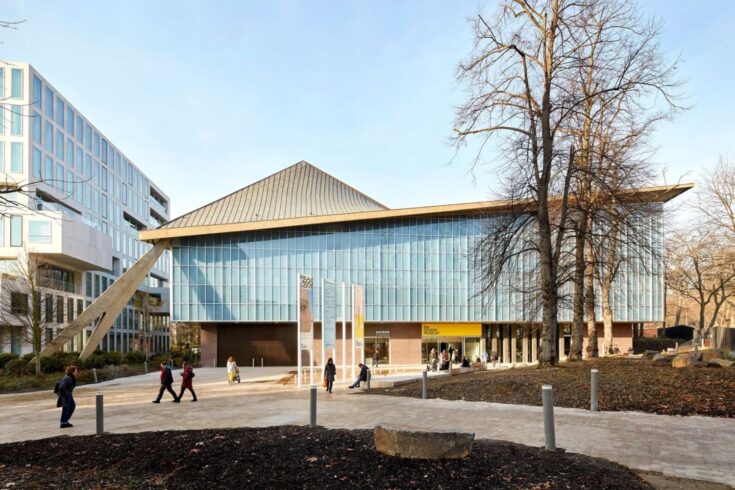The Arts and Humanities Research Council (AHRC) awarded IRO status to the Design Museum on behalf of UK Research and Innovation (UKRI).
This places it on the same footing as universities.
Institutions with IRO status are eligible for a range of funding from UKRI to sustain further research.
Achieving IRO accreditation reflects how the Design Museum has built its capacity as a centre of research and excellence.
Christopher Smith, Executive Chair of AHRC, said:
Design unlocks system-level thinking to address the large scale and interconnected challenges of a global world.
AHRC is proud to have placed Design at the centre of its work within UKRI, catalysing new collaborations and raising the ambitions and impact of researchers and practitioners alike.
We welcome the Design Museum as an Independent Research Organisation, and look forward enormously to new partnerships in design-led research and innovation.
Tim Marlow, Director of the Design Museum, said:
To be the first independent museum to receive IRO status signifies the museum’s evolving position in the cultural landscape.
We have always been a place where the range and impact of design has been explored, through our exhibitions, displays, events and learning programming.
Our newly granted research status will give us the opportunity to explore the potential of design to give shape to the future in greater depth.
It will also give creative energy to the museum and be a catalyst for change well beyond the walls of our landmark building.
Other cultural institutions to have received this accreditation include the Victoria and Albert Museum (V&A), Tate and the Royal Shakespeare Company.
The Design Museum
The Design Museum’s research culture is based less on studying historical collections and more on understanding the contemporary landscape that design plays a tangible role in shaping.
The museum supports design research across departments, from curatorial and learning to audiences and collections.
Its flagship research platform is Future Observatory, the Design Museum’s national research programme for the green transition.
The programme is the hub for Future Observatory: Design the Green Transition, a £25 million three-year programme delivered in partnership with AHRC.
Future Observatory funds, nurtures and exhibits new design thinking on urgent environmental issues.
Justin McGuirk, Director of Future Observatory at the Design Museum, said:
The Design Museum’s research culture stands out in the museum landscape because it is not focused on reinterpreting our collection but on reflecting design’s role at the interface of change.
With Future Observatory’s national remit to support design research for the green transition, research is now a core part of the museum’s mission, and that is reflected across the board, from the Curatorial and Learning teams to our work on low-carbon exhibition-making.
It is deeply rewarding to see that culture recognised.
The green transition
In the last three years AHRC has, working very closely with the Future Observatory, distributed more than £18 million to at least 60 design research projects across academia and industry.
The bulk of that funding has supported the Green Transition Ecosystem grants, which are multi-partner multi-sector awards based at universities across the UK.
However, funding has also supported dozens of research projects looking at issues from waste reduction to climate resilience.
A new Future Observatory display space was opened last year at the museum to introduce visitors to ongoing design research across the UK.
In 2021, Future Observatory absorbed the museum’s long-standing Designers in Residence programme, transforming it into Design Researchers in Residence to reflect the new focus on research.

